#medieval church
Photo
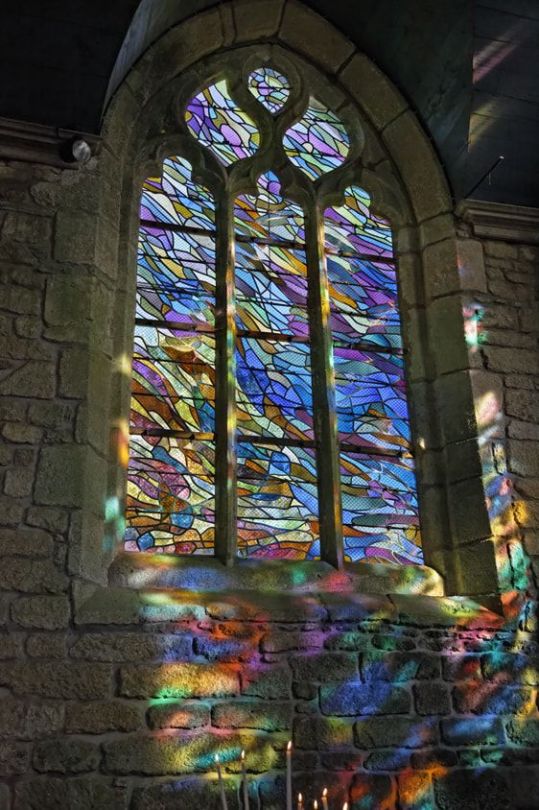

Stained glass | Colored light by Michel Carlué
#stained glass#stone church#medieval church#medieval#curators on tumblr#my upload#silvaris#stone#building#ancient
3K notes
·
View notes
Text
Medieval Hermitage atop Katskhi Pillar, in Georgia (South Caucasus), c. 800-900 CE: this church was built during the Middle Ages; it sits atop a limestone column that has been venerated as a "Pillar of Life" for thousands of years
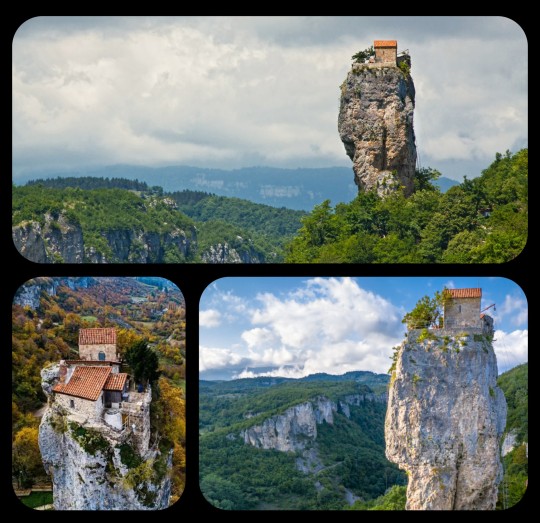
Known as Katskhi Pillar (or Katskhis Sveti), this enormous block of limestone is located in western Georgia, about 10km from the town of Chiatura.
The church that stands atop Katskhi Pillar was originally constructed during the 9th-10th century CE. It was long used as a hermitage for Stylites, who are sometimes referred to as "Pillar Saints" -- Christian ascetics who lived, prayed, and fasted atop pillars, often in total isolation, in an effort to bring themselves closer to God. This tradition originated in Syria during the 5th century CE, when a hermit known as Simeon the Elder purportedly climbed up onto a pillar and then stayed there for nearly 40 years, giving rise (no pun intended) to the Stylites. Stylitism managed to survive for about 1,000 years after its inception, but it gradually began to die out during the late Middle Ages, and by the end of the 16th century, it had essentially gone extinct.
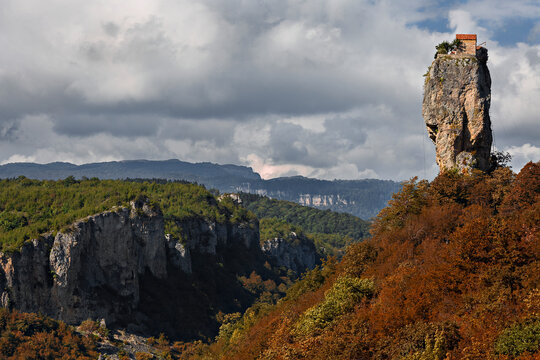
Researchers don't really know how the monks originally gained access to the top of Katskhi Pillar, or how they were able to transport their building materials up to the top of the column. There's evidence that the Stylites were still living at Katskhi Pillar up until the 15th century, but the site was then abandoned shortly thereafter. This was the same period in which Georgia came under Ottoman rule, though it's unclear whether or not that may have played a role in the abandonment of the site.
The hermitage continued to lay abandoned for nearly 500 years after that. No one had been able to gain access to the top of the pillar, and very little was even known about the ruins that lay scattered at the top, as knowledge about the site's origin/history was gradually lost. There are many local legends that emerged as a way to fill in those blanks.
The site was not visited again until July 29th, 1944, when a mountaineer finally ascended to the top of the column with a small team of researchers, and the group performed the first archaeological survey of the ruins. They found that the structure included three hermit cells, a chapel, a wine cellar, and a small crypt; within the crypt lay a single set of human remains, likely belonging to one of the monks who had inhabited the site during the Middle Ages.
A metal ladder (the "stairway to Heaven") was ultimately installed into the side of the pillar, making it much easier for both researchers and tourists to gain access to these ruins.

The hermitage at the top of Katskhi Pillar actually became active again in the early 1990's, when a small group of monks attempted to revive the Stylite tradition. A Georgian Orthodox monk named Maxime Qavtaradze then lived alone at the top of Katskhi Pillar for almost 20 years, beginning in 1995 and ending with his death in 2014. He is now buried at the base of the pillar.
While the hermitage is no longer accessible to the public, and it is currently uninhabited, it's still visited by local monks, who regularly climb up to the church in order to pray. There is also an active monastery complex at the base of the pillar, where a temple known as the Church of the Simeon Stylites is located.

The Church of the Simeon Stylites: this church is located within an active monastery complex that has been built at the base of the pillar; several frescoes and religious icons decorate the walls of the church, and a small shrine containing a 6th century cross is located in the center
There are many lingering questions about the history of Katskhi Pillar, particularly during the pre-Christian era. There is at least some evidence suggesting that it was once the site of votive offerings to pagan deities, as a series of pre-Christian idols have been found buried in the areas that surround the pillar; according to local tradition, the pillar itself was once venerated by the pagan societies that inhabited the area, but it's difficult to determine the extent to which these claims may simply be part of the mythos that surrounds Katskhi Pillar, particularly given its mysterious reputation.
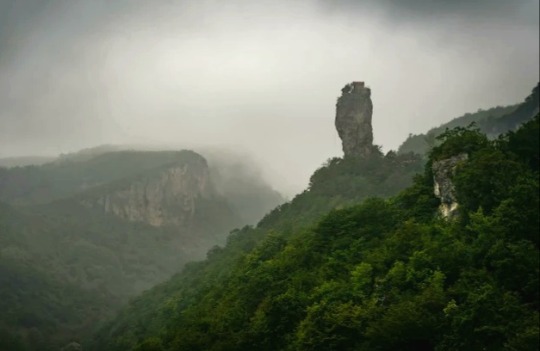
Sources & More Info:
BBC: Georgia's Daring, Death-Defying Pilgrimage
CNN: Katskhi Pillar, the Extraordinary Church where Daring Monks Climb Closer to God
Radio Free Europe: Georgian Monk Renews Tradition, Lives Atop Pillar
Architecture and Asceticism (Ch. 4): Stylitism as a Cultural Trend Between Syria and Georgia
Research Publication from the Georgian National Museum: Katskhi Pillar
Journal of Nomads: Katskhi Pillar, the Most Incredible Cliff Church in the World
Georgian Journal: Georgia's Katskhi Pillar Among World's 20 Wonderfully Serene and Secluded Places
#archaeology#history#anthropology#artifact#medieval architecture#medieval church#Stylites#asceticism#georgia#sakartvelo#katskhi pillar#religion#travel#monastery#paganism#caucasus#medieval europe#christianity#strange places
447 notes
·
View notes
Text




Christ Church Cathedral, Dublin.
#christ church cathedral#dublin#ireland#catholiscism#christianity#stained glass#stained glass window#p#my photography#medieval architecture#medieval church
154 notes
·
View notes
Text
Winchester Cathedral and the Morley Library



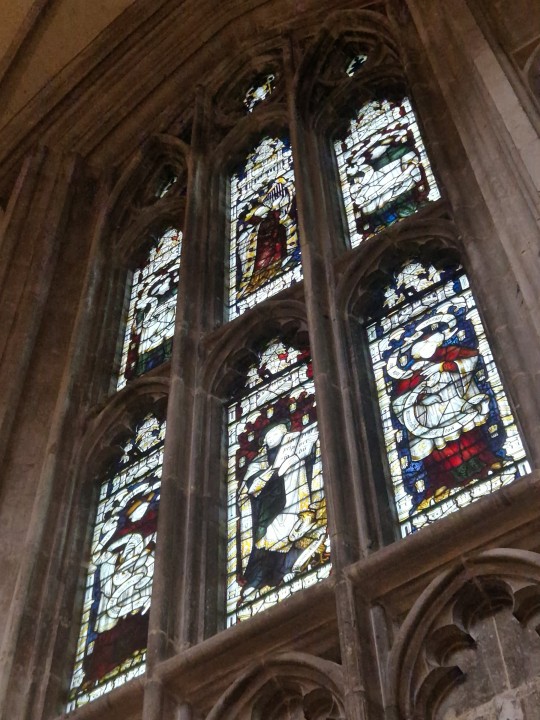
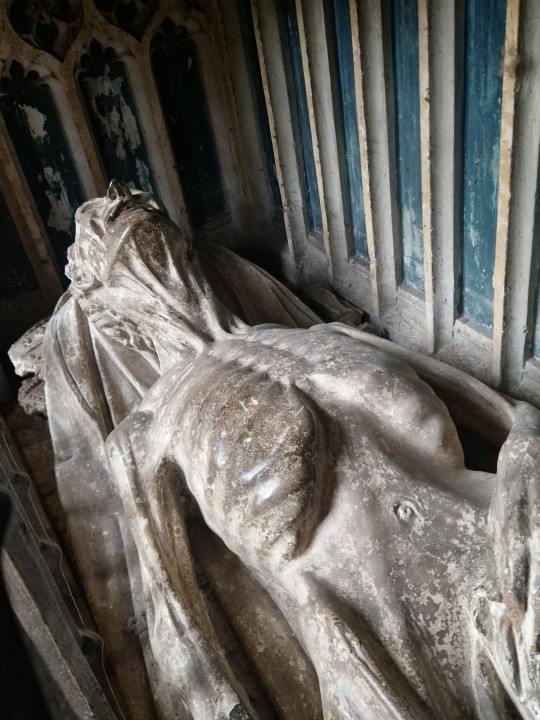



#old library#library#old books#books#book history#manuscript#medieval#medieval art#medieval church#cathedral#dark academia
24 notes
·
View notes
Text


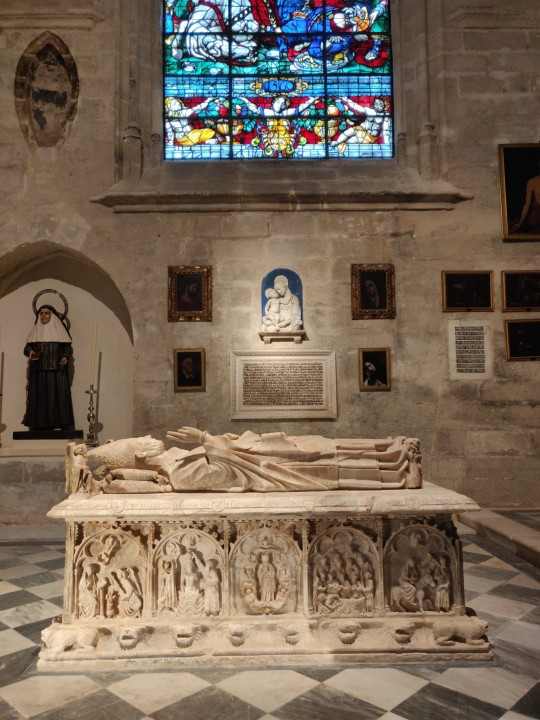
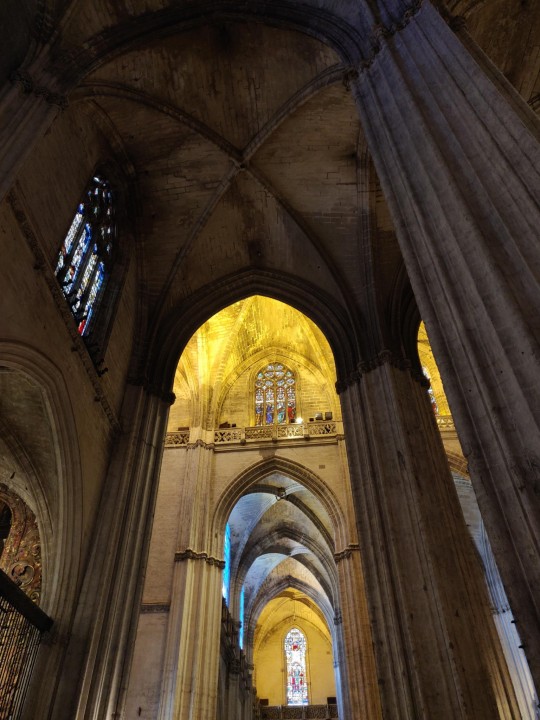
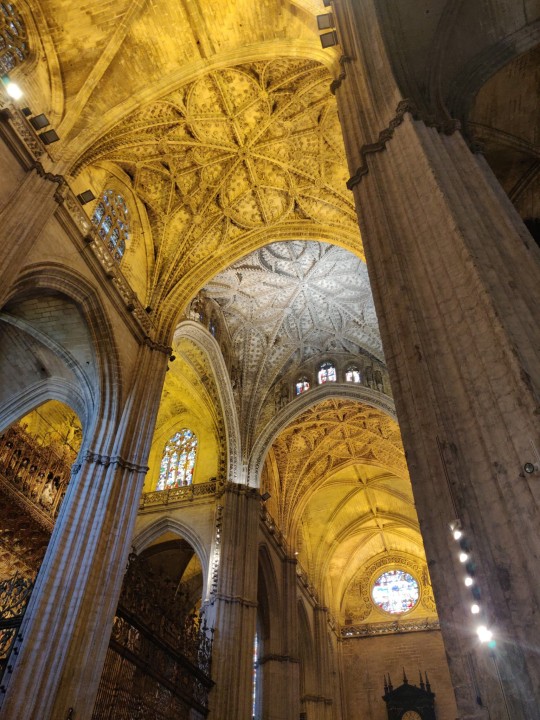
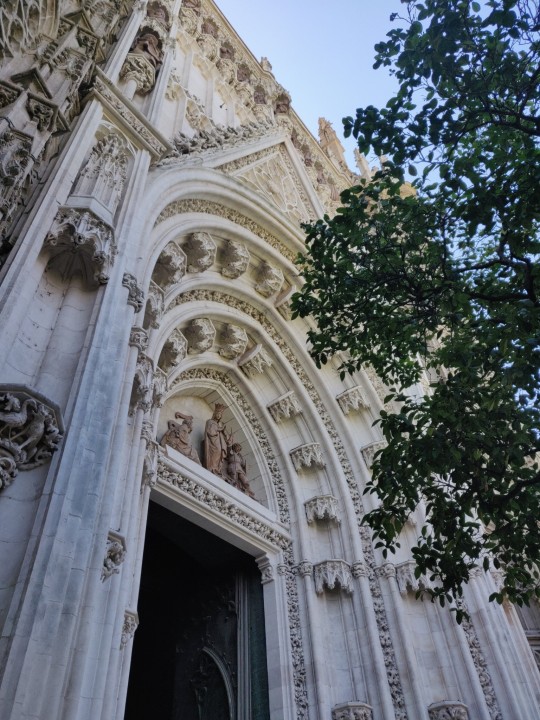
Cathedral of Sevilla, Spain, April 2023
#personal#medieval cathedral#medieval church#gothic architecture#medieval architecture#medievalcore#sevilla#spain#medieval
52 notes
·
View notes
Text
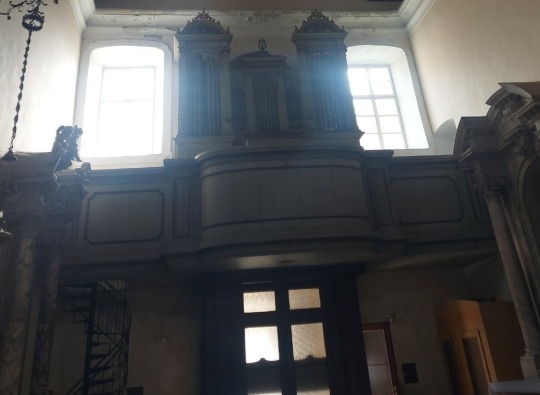
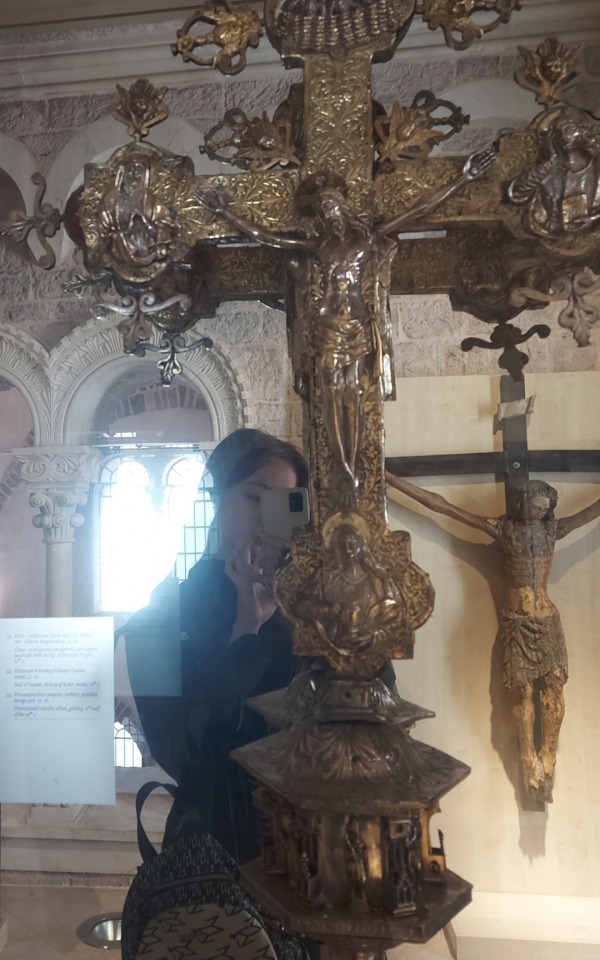
17 notes
·
View notes
Text
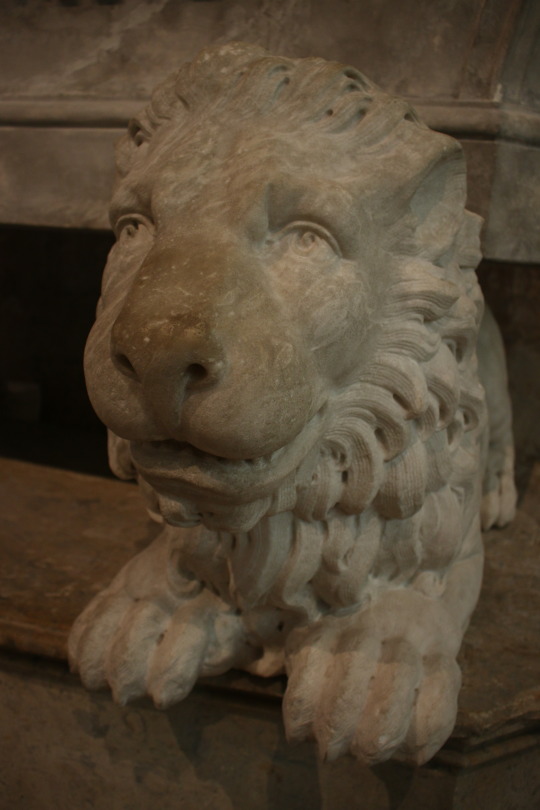
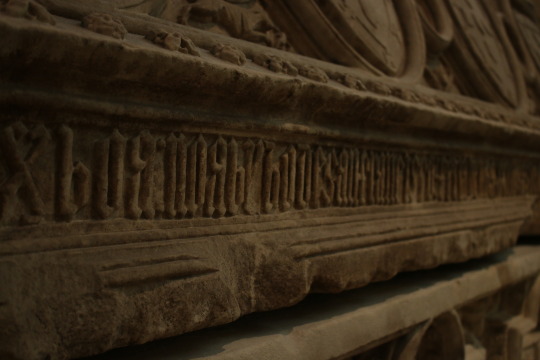
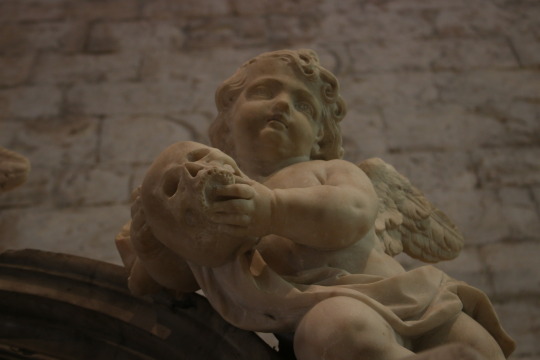
Convento do Carmo, Lisboa, Portugal, 1-06-23
#sculpture#medieval church#gothic style#gothic aesthetic#stone#ruins#lettering#decay#decadence#memento mori#fine arts#old#medieval
18 notes
·
View notes
Text
Lost for centuries beneath the sea, a sacred medieval structure has been rediscovered in Germany. Experts continue to uncover the mystery of the sunken Rungholt church, once the heart of a thriving settlement.
#Frisian#Germany#sanctuary#medieval#settlement#storm#medieval church#ancient#history#ancient origins
40 notes
·
View notes
Text


medieval summer vibes in jelgava
20 notes
·
View notes
Text

reminds me of the five of pentacles tarot card.
#gothic art#gustave dore#medieval#medieval church#church#architecture#gothic architecture#snowfall#snowy day#cold weather#artwork#aesthetic
72 notes
·
View notes
Text
Vardzia, a Medieval Cave City in Georgia (South Caucasus), built in 1150-1200 CE: Vardzia was designed to be used as a fortress/monastery; it was accessible only through hidden passageways, and it contained more than 6,000 caves, 15 chapels, 25 wine cellars, an apothecary, a forge, a bakery, farming terraces, and an irrigation system

The monastic caves at Vardzia cover an area of about 500 meters. They are carved into the cliffs along the Erusheti mountains, which are located in Javakheti (a southern province near the borders between Georgia, Turkey, and Armenia).
Vardzia was originally meant to serve as a fortress, particularly in the event of a Mongol Invasion. It was protected by defensive walls, and the cave system itself was largely concealed within the mountain (though much of it is now exposed); it also contained a secret escape tunnel and several dead-end tunnels that were designed to delay/confuse enemy forces. The cave city could only be accessed through a series of hidden passageways that began near the banks of the Mtkvari River (which runs through the valley below the cave complex). Water was supplied through an irrigation system that was connected to the river, providing the inhabitants with both drinking water and agricultural irrigation, as the site contained its own terraced farmland.
The cave complex also functioned as a monastery, with a large collection of manuscripts and relics ultimately being housed at the site.

In its prime, the complex at Vardzia was inhabited by tens of thousands of residents.
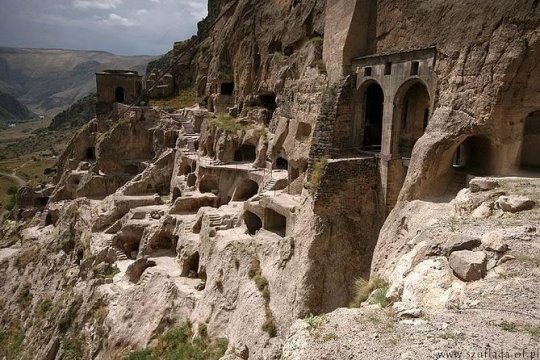
Unfortunately, most of the original structures at Vardzia were destroyed by an earthquake that struck the region in 1283 CE, just a century after its construction; the earthquake sheared away the outer layer of the cliffside, exposed many of the caves, and demolished almost two-thirds of the site. The surviving structures represent only a fraction of the cave complex that once existed at Vardzia, with only about 500 caves still intact.
When the earthquake tore through the site in 1283, much of the fortress and many of its defenses were also destroyed, and Vardzia lost most of its military/defensive purposes. Still, it continued to operate as a Georgian Orthodox monastery for several hundred years after that. It narrowly escaped the Mongol Invasions of the 1290s, but it was raided by the Persians during the 16th century; the invading forces burned many of the manuscripts, relics, and other items that were stored within the cave system, leaving permanent scorch marks along the walls of the inner chambers. The site was abandoned shortly thereafter.

Medieval portrait of Queen/King Tamar: this portrait is one of the Medieval frescoes that still decorate the inner chambers of Vardzia; Tamar was the first queen regnant to rule over Georgia, meaning that she possessed the same power/authority as a king and, as a result, some Medieval sources even refer to her as "King Tamar"
Vardzia is often associated with the reign of Queen Tamar the Great, who ruled over the Kingdom of Georgia from 1184 to 1213 CE, during a particularly successful period that is often known as the "Golden Age" of Georgian history. Queen Tamar was also recognized as the Georgian King, with Medieval sources often referring to her as King Tamar. She possessed the powers of a sovereign leader/queen regnant, and was the first female monarch to be given that title in Georgia.
The initial phases of construction at Vardzia began under the command of King George III, but most of the complex was later built at the behest of his daughter, Queen Tamar, who owned several dedicated rooms at Vardzia and frequently visited the cave city. Due to her relationship with the cave complex at Vardzia, Queen Tamar is sometimes also referred to as the "Mountain Queen."
Despite the damage that the site has sustained throughout its history, many of the caves, tunnels, frescoes, and other structures have survived. The site currently functions as a monastery once more, with Georgian monks living in various chambers throughout the cave system.

I visited Vardzia back in 2011, during my first trip to Georgia. It's an incredible site, though some of the tunnels are very narrow, very dark, and very steep, which can get a bit claustrophobic.
Sources & More Info:
Atlas Obscura: Vardzia Cave Monastery
CNN: Exploring Vardzia, Georgia's Mysterious Rock-Hewed Cave City
Lonely Planet: Vardzia
Globonaut: 5 Facts about Vardzia, Georgia's Hidden Cave City
Wander Lush: Vardzia Cave Monastery (complete visitor's guide)
#archaeology#anthropology#history#vardzia#georgia#caucasus#cave city#cave complex#monastic caves#artifact#architecture#military history#Tamar#religon#comparative religion#medieval fortress#middle ages#medieval church#medieval europe#travel#I think I'd need#all 25 wine cellars#just to get through a Mongol invasion
393 notes
·
View notes
Text
Richard Firth Green. Elf Queens and Holy Friars: Fairy Beliefs and the Medieval Church. Philadelphia: University of Pennsylvania Press, 2016. Paperback edition. 285 pages.
Shop link in bio.
instagram
#fairy#fairies#fairyland#medieval#medieval history#elves#medieval church#bookseller#medieval studies#demonology#occult#magic#Instagram
12 notes
·
View notes
Text


North Doors (13th century CE) of St Edward's Church, Stow-on-the-Wold, Gloucestershire, England, flanked by trees.
These doors are also known as ‘The Yew Tree Door’ or ‘The Hobbit Door.’
It’s no secret that the ancient and magical yew trees of Britain have guided us for centuries and are shrouded in an air of mystery. 🌳
—
St Edward's Church is a medieval-built Church of England parish church, serving Stow-on-the-Wold ('Stow'), Gloucestershire.
It is an ashlar Cotswold stone Norman church, its parts dating from the 11th or 12th to the 14th century, except for its tower and clerestory of the 15th century.
A tourist attraction, it is among 98 Grade I listed buildings in Cotswold (district), a mainly rural district having about one third of the total of Grade I listed buildings in Gloucestershire.
#St Edward's Church#The Yew Tree Door#The Hobbit Door#Stow-on-the-Wold#Gloucestershire#England#North Doors#doors#trees#medieval church#yew trees
9 notes
·
View notes
Text



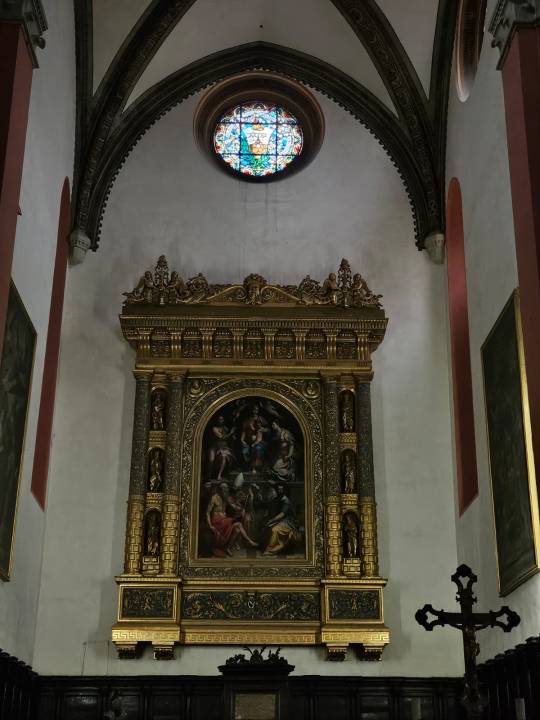

AAAAAAAAAAA WHY ARE MEDIEVAL CHURCHES SO BEAUTIFUL
3 notes
·
View notes
Video
youtube
The Book of Kells (A Medieval Masterpiece)
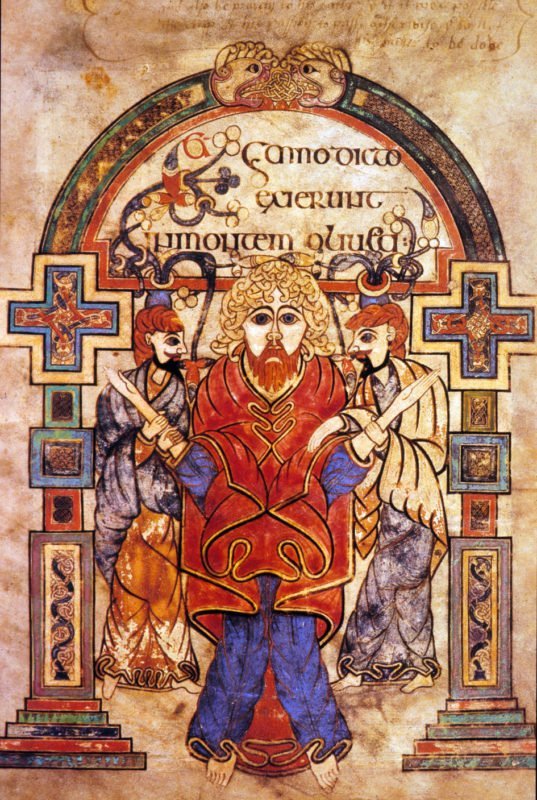

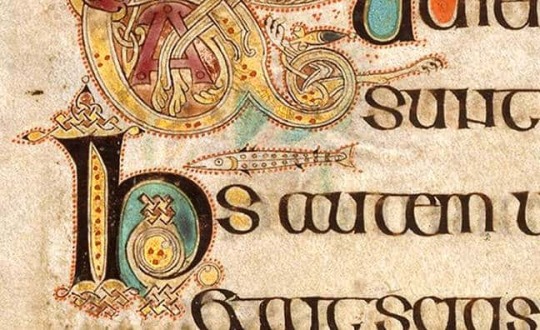
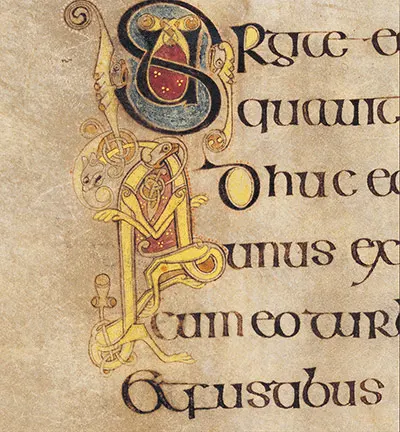
The Book of Kells (A Medieval Masterpiece)
https://youtu.be/zAHQEBhJ4HA?si=MJLxkZyd1ZDRyZvU via @YouTube
#youtube#Book of Kells#Illuminated Manuscript#Ireland#Medieval Church#Middle Ages#Medieval Manuscript
2 notes
·
View notes
Text
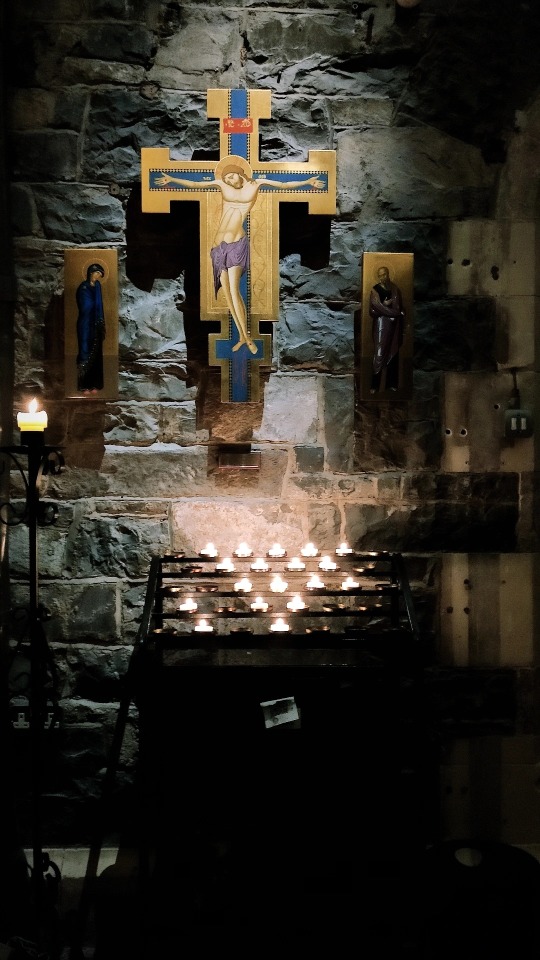

Christ Church Cathedral, Dublin.
#christ church cathedral#dublin#ireland#medieval architecture#medieval church#p#catholicism#christianity#my photgraphy
19 notes
·
View notes